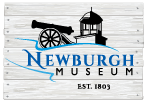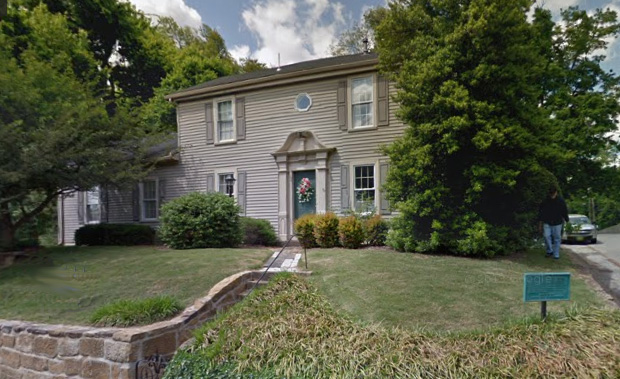114 East Jennings St.
This white frame house is reminiscent of New England homes with a broken pediment entrance door. It was built around 1841 by Thomas P. Gunnell, who was born in Augusta County, Virginia of English descent in 1814 and came to Newburgh in 1837 from Philadelphia. The sand-stone wall around the yard was built by Willam Butterworth, a local stonecutter of that day who also built most of the stone walls in early Newburgh. Apparently a very industrious man, Mr. Gunnell was not only a blacksmith, but he also dealt in plows, wagons and buggies.
The land on which this house stands was originally deeded by the United States to General Johnson in 1807 and after passing through several changes it became the property of Abner Luce in 1832. In 1841 Thomas P. Gunnell bought it and built this house. The Gunnell family lived here until it was deeded to George W. Fuquay by the Gunnell heirs in 1894. George Fuquay was a descendant of Isom Fuquay, the first of this family to come to Newburgh in 1817. He followed his father in the mercantile (Dry Goods) business and for many years this business was located in the building formerly occupied by the Old Exchange Hotel. Mr. George W. Fuquay retired and moved his family to Florida and at that time he deeded it to his sister, Miss Lula Fuquay in 1918. She owned it only for a short time for in 1920 she sold it to Eugene G. Sargeant of Newburgh, who bought it as an investment.
After Mr. Sargeant’s death in 1928, his daughter Tessie Lou Sargeant of Milwaukee, Wisconsin came into possession of it. She was an artist that graduated from the Chicago Art Institute and an authority on antiques, being one of the first antique dealers in Milwaukee. She was one of the founders of the Wisconsin State Antiquarian Society and in 1951 was called on by Mrs. Herbert Koehler in restoring the Wade House in Wisconsin (an old stage coach inn). Mrs. Sargeant sold the property to Mr. J.B. Tisserand of Newburgh in 1932.
Mr. Tisserand made many improvements in the house changing some of the windows – scaling them to size, took off a front porch and added the broken pediment arch over the front doorway after copying it from a model in Yorkshire, England. He repaired and replaced some of the original floors, and added a bedroom on the first floor. Miss Louise B. Osborn of Evansville then bought it in 1938 with her mother and two brothers and lived there.

